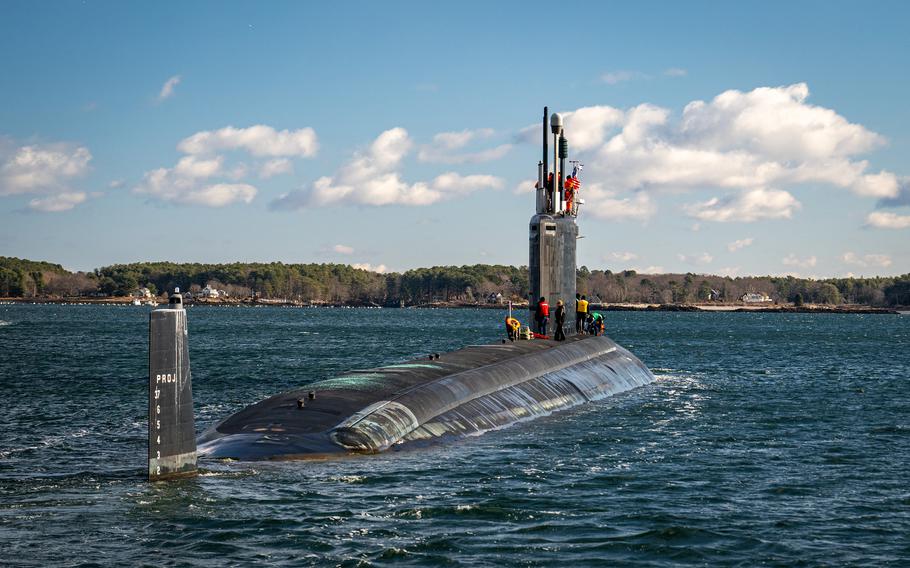
The Virginia-class attack submarine USS Texas departs Portsmouth Naval Shipyard in Maine for sea trials on Dec. 6, 2024. (Branden Bourque/U.S. Navy)
NAPLES, Italy — The Navy will need a budget boost of at least $85 billion annually to realize an ambitious goal to grow its fleet by nearly 100 ships over the next three decades, according to a recent Congressional Budget Office analysis.
The service would need an estimated annual budget of $340 billion to operate, purchase and maintain a fleet of 381 battle force ships as outlined in its most current shipbuilding proposal, the CBO said in a report released Monday.
That’s roughly one-third more under current valuations than the Navy’s $255 billion budget in 2024, said the CBO, which analyzed the service’s 30-year shipbuilding plan submitted to Congress in March.
That plan would grow the fleet to a level not seen since 2001, according to the report. The service now has about 296 numbered battle force ships, including aircraft carriers, destroyers, submarines and combat logistics vessels, among others.
“Over the past decade, funding for ship construction reached its highest level since the Reagan Administration’s defense buildup in the 1980s,” the CBO said. “Since 2015, lawmakers have appropriated an average of $2.5 billion more per year for shipbuilding than the President has requested, partly because of concerns that the fleet is too small to perform all of its missions.”
The Navy needs a larger, more flexible fleet to address growing threats in the Indo-Pacific, Europe and the Middle East, officials and naval analysts have argued.
An inadequately sized force is one reason why there are fewer Navy ships currently on patrol in the eastern Mediterranean Sea than in recent years, analysts recently told Stars and Stripes.
Presence in the Mediterranean is “partly threat-driven and situation-driven, and it’s all conditioned by (the fact that) there aren’t enough ships in the Navy,” said Bradley Martin, a retired Navy surface warfare officer and director of the Rand Corp. National Security Supply Chain Institute.
Under the Navy’s 2025 shipbuilding plan, the service would buy fewer next-generation attack submarines and large surface ships, favoring proven current-generation submarines, destroyers and other vessels, according to the CBO report.
For example, in its 2024 plan the Navy envisioned purchasing as many as 35 next-generation attack submarines. Its 2025 proposal includes buying just 14 of those vessels.
Instead, the service is opting to buy 36 Virginia-class fast-attack submarines in the coming decades. In 2024, the Navy said it would buy as few as 10 of those submarines.
Over the next 30 years, the Navy would buy 364 ships, or an average of about 12 annually, for an estimated $903 billion.
That cost likely is higher — $1.075 trillion in current-year dollars — when all expenses, such as outfitting new ships or purchasing oceanographic survey, sealift and other vessels not considered part of the battle force are included, the CBO said.
The Navy and CBO cost calculations also vary in the way they determine the design and capabilities of some future ships, as well as labor and other costs, the report stated.
The CBO cautioned that the estimates don’t include costs for adding 134 surface and undersea drones in the Navy’s plan, which would bring its total platforms to 515 by 2054.
The report cast doubt on the Navy’s ability to achieve its acquisition goals, which also include more missiles and unmanned systems on ships to make it more difficult for an opponent to destroy the fleet’s offensive capability.
“If the Navy is unable to reduce the maintenance delays that it has been experiencing for more than a decade, it would not be able to deploy as many ships as achieving its 381-ship goal would suggest,” the CBO said.